
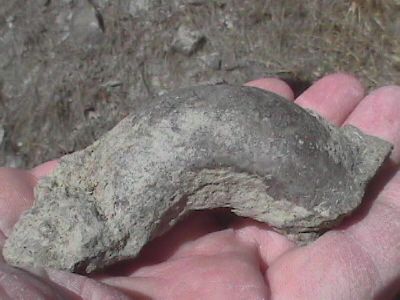
This is a really nice fragment a huge coiled Cephalopod! Normally, the nautiloid Cephalopods found in this area have straight shells. It is a rare find when one is curled or coiled.
Some of the fossils found that day.


This is a really nice fragment a huge coiled Cephalopod! Normally, the nautiloid
Cephalopods found in this area have straight shells. It is a rare find when one
is curled or coiled.
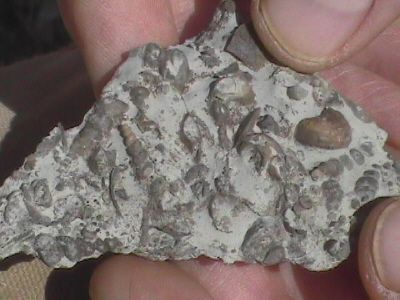
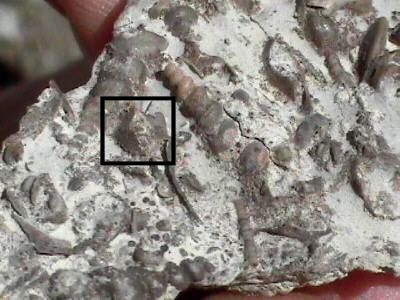
This limestone and shale mixture was pulled out of one of the several mollusc
layers on the site. Note first the great variety of gastropods (snail shells) on
this rock. Closer examination of the surface revealed a structure with ridged
plates (shown in the black box, but not clear in the photo). This structure
could be a number of things and requires a professional to correctly identify.
It could be a Conularia (jellyfish shell) or a Machaeridian (a problematic
fossil), among others. Whatever it is. It's probably rare and special.
A note to all who attended this trip: Closely examine the rocks you took
home from this trip with a hand lens or microscope of at least 10X power. Most
of the best finds from these layers are too small to be spotted with the naked
eye!

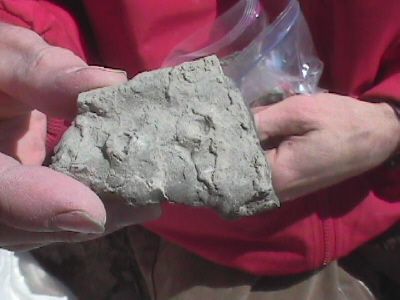
This site is also famous for shale and bryozoan nodules that have holdfasts of
the very large crinoid Anamolocrinus on BOTH sides of the nodules! One was found
this trip! (Above showing both sides). This is particularly meaningful to
science, because it indicates the cobble was tossed by the rough Ordovician
Ocean currents and has repeatedly been encrusted by epizoans (encrusters).
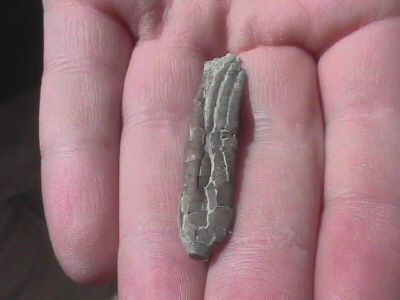

Other crinoids found today include nice sized crinoid calyxes of Ectenocrinus
simplex, pictured above with it's proud finder.

Smaller specimens of Ectenocrinus simplex were also found.

Here's a VERY nice find. It's a
Cincinnaticrinus varibrachialus in shale with a
long stem and arms that are not often preserved. This specimen will look
exceptionally nice when it is carefully cleaned up. I'll bet Jack Kallmeyer
(President) would like to pocket this one!
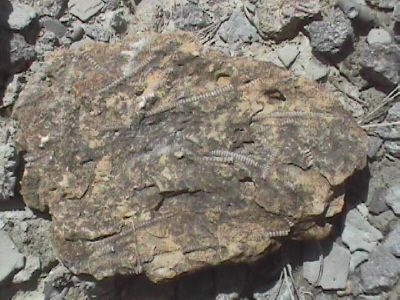
The massive crinoid stems on some of these rocks really stand out due to the
difference in color, as shown in the specimen above.

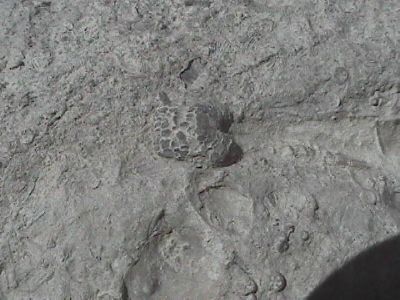
Here is a very unusual item found that day. I have no idea what it is, but it
may be a rare Echinoderm and must be very uncommon. It might be a carpoid! Or it
could be a new variety of an algae similar to Receptaculites that has recently
been found at a neighboring site. No mater what this thing is, it's a great
find!

And, of course, we found an abundance of molluscs. Here's a nice, big Nautiloid
Cephalopod.
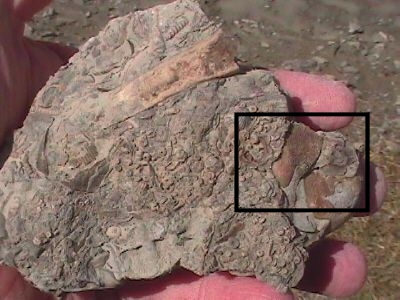

This site contains a few layers of fossil hash. Here's a really nice rock with
All kinds of things on it, including crinoid stems, Flexicalymene trilobite and
Isotelus trilobite molt parts (see big Isotelus thorax segment in the first of
these two pictures. The second picture shows a closeup of a really nicely
preserved pelecypod (clam). This one is probably of the genus Ambonychia.
The Dry Dredgers and individual contributors
reserve the rights to all information, images, and content presented here.
Permission to reproduce in any fashion, must be requested in writing to admin@drydredgers.org
.
www.drydredgers.org is designed and maintained by Bill Heimbrock.